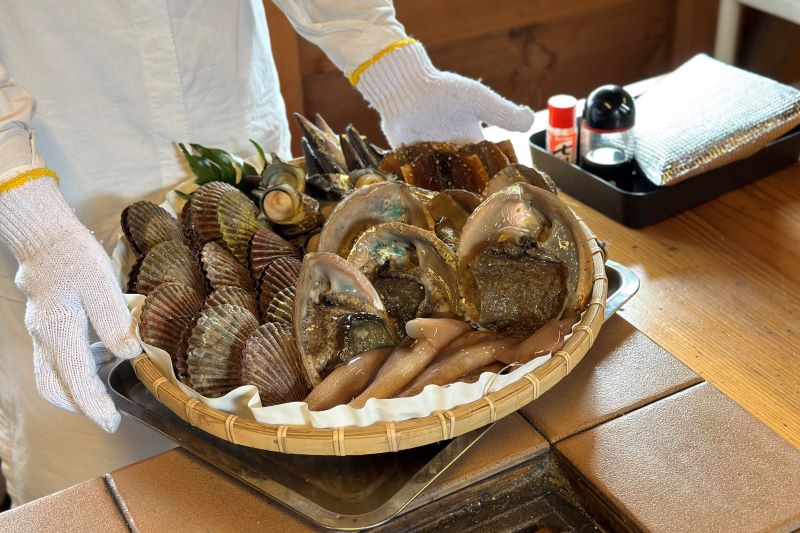In the end of August 2024, I visited Shima city, Mie prefecture. After learning about “Katsuobushi (bonito flakes)”, the beginning of Japanese seasoning, I arrived at Ama Hut “Satoumian”.
Ama divers are women who dive to collect shellfish and seaweed. The origin of ama divers is not clearly known, but their history is long, and the oldest ama divers in Japan are thought to be about 5,000 years old, as tools for collecting shellfish have been found that are believed to have been used by ama divers since the mid-Jomon period.
Ama divers dive with only their wetsuits and fins on, which requires a great deal of physical strength. After the ama divers finish fishing, they go to the Ama hut. There, the divers warm themselves by a wood fire (it is said that if they do not have a wood fire, they will catch a cold), take a rest while eating snacks, and chat with their colleagues around the hearth. It is an important place to recover strength and communicate with others.
I came here to experience such ama hut culture at Satoumian. While listening to the precious stories of ama divers, you can enjoy fresh seafood carefully grilled one by one by ama divers.
The person in charge is a veteran ama diver with 54 years of experience.
She showed us the ingredients she will be grilling for us. Gorgeous~!
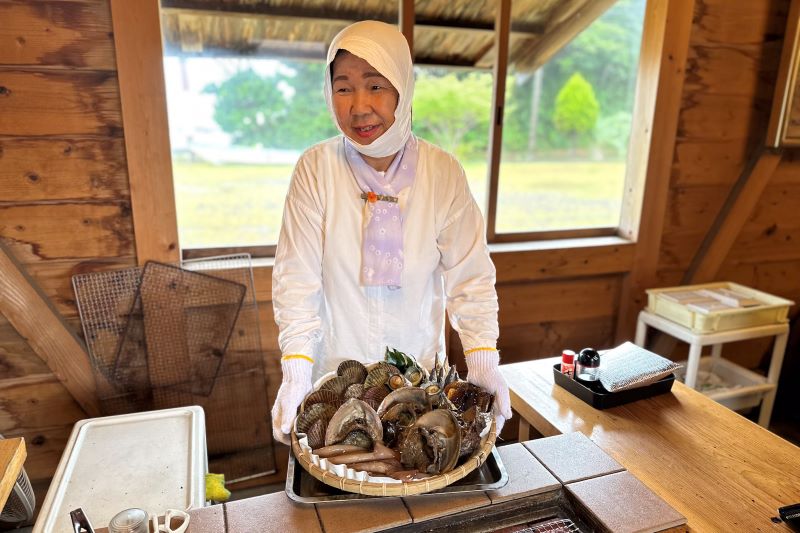
The first thing she grilled for us was the Hiougi-gai (shellfish). I had never heard of this shellfish before and thought, “What?” I had never heard of it before, but that was as it should be. The Hiougi-gai can only last for one day after being landed, so it is only eaten by locals. It is a bivalve shellfish with a distinctive shell color, also called a leaf shell. After a while on the charcoal fire, they opened their mouths.
I had it without any seasoning, as I was told “please eat it without any seasoning.” The plump and resilient meat was full of the extract of the shellfish and delicious. The turban shell was also grilled together.
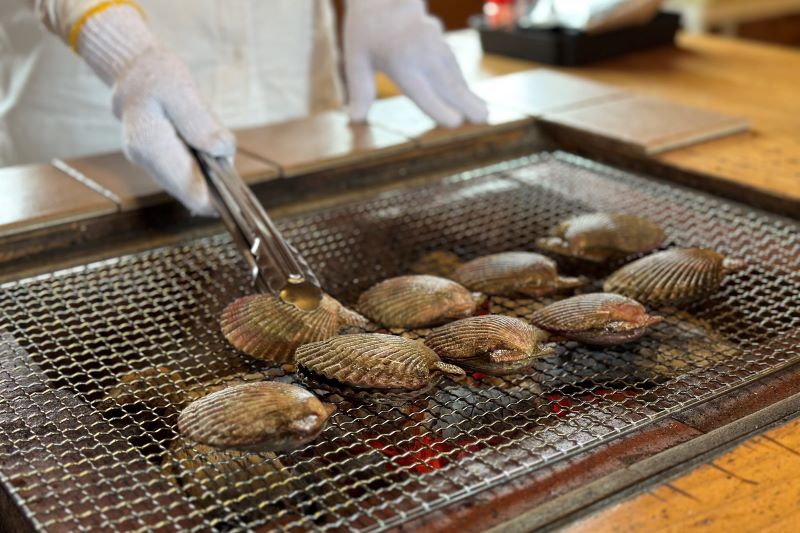
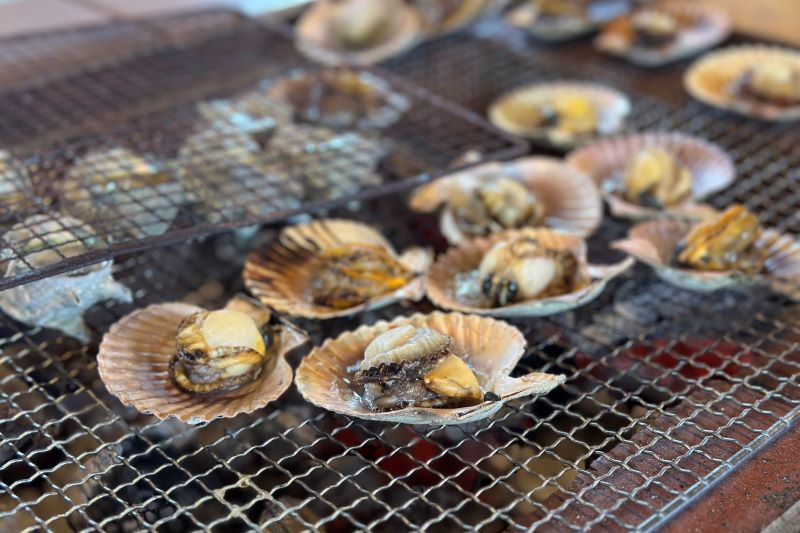
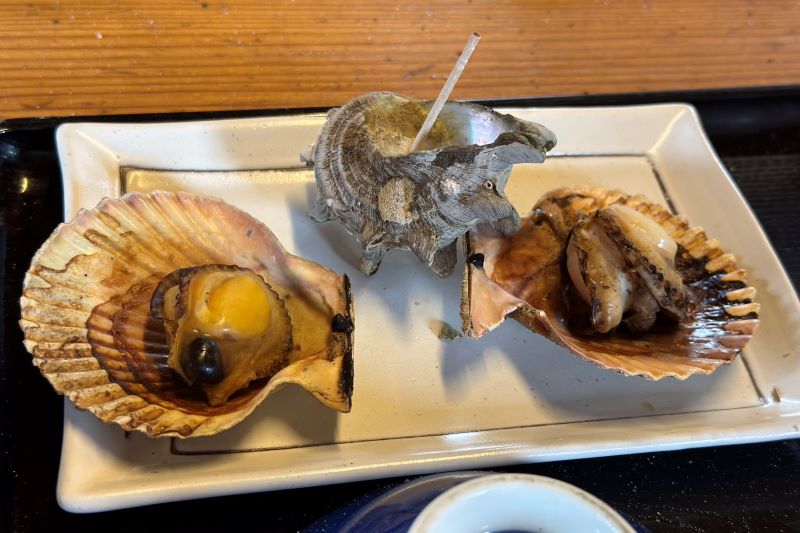
The squid was juicy and tasty even without any seasoning. We were also offered shichimi (seven spice) toppings, soy sauce, and mayonnaise, which we devoured with relish.
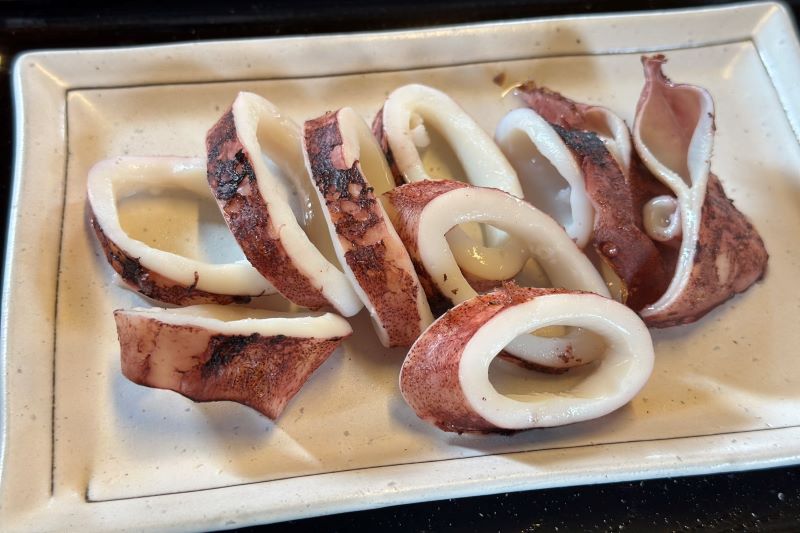
Today’s main dish, abalone! Very large abalone, the price is several times higher than in Tokyo… In this area, there is a restriction that abalone smaller than 10.6 cm must not be caught. In addition to the size of the abalone, there are also limits on the number of times and the amount of diving that can be caught per day, so that people are aware of the importance of “not overfishing”. This awareness is the reason why ama divers’ fishing is highly regarded as a model of sustainable fishing that coexists with nature while preventing overfishing and protecting resources, and has been attracting attention from around the world in recent years.
By the way, I wondered why the meat was so colorful, and when I asked the diver about it, she replied, “I guess the color changes depending on the different seaweed they eat.” The taste was of course delicious. I had never had liver before, and I was afraid to try it because I am not very good at it, but I thought, “What? I feel it’s tasty!” It was a moment that opened a new door for me.
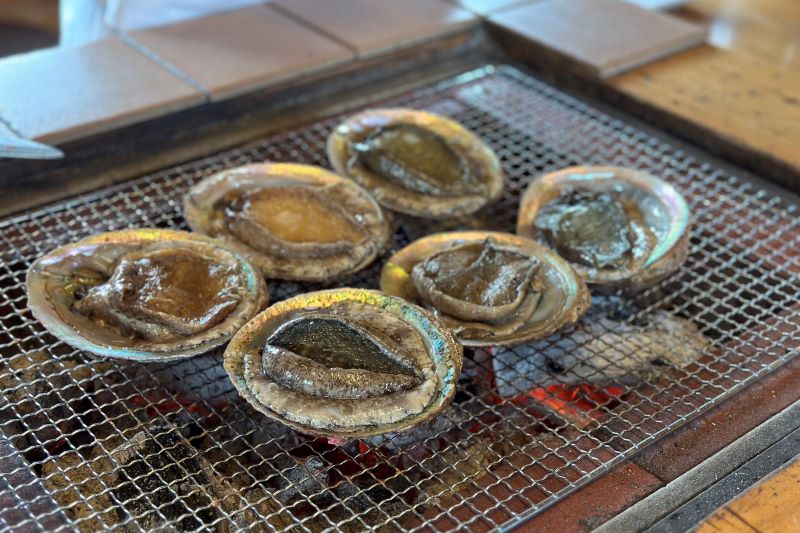
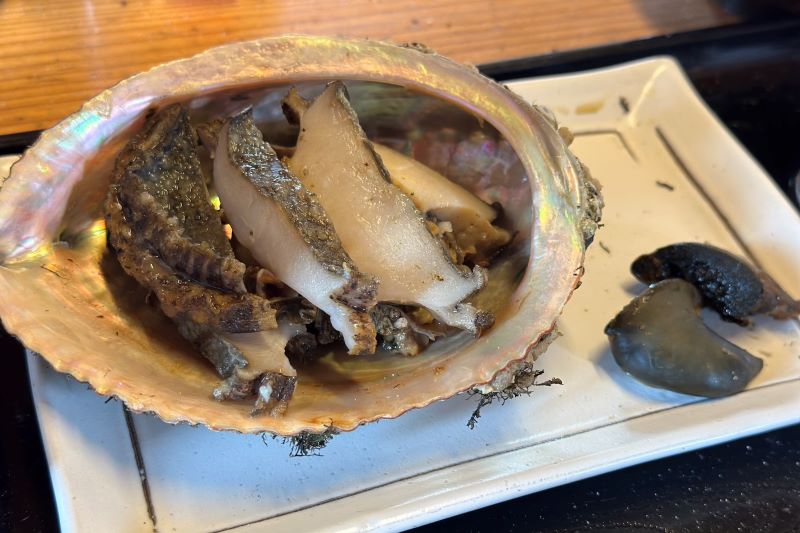
In addition to the fresh shellfish, which were individually large, the lunch consisted of hijiki kamameshi, miso soup with aosa (sea lettuce), and dried fish, all of which were truly satisfying.
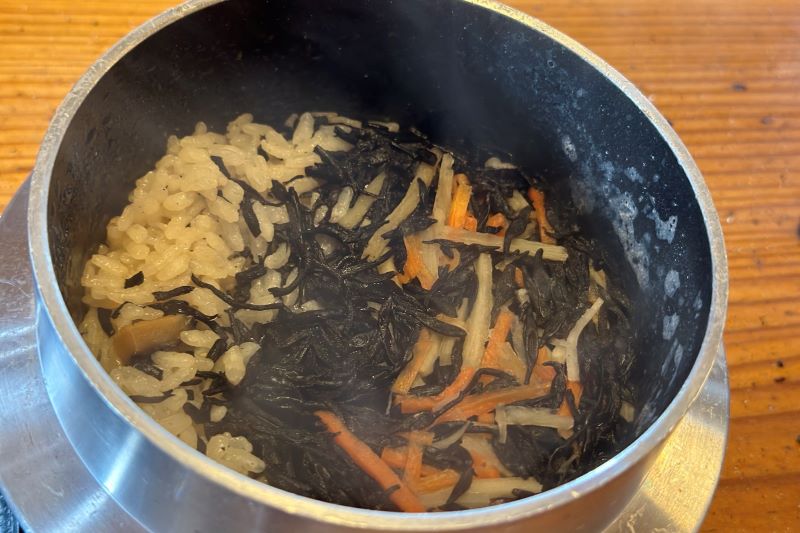
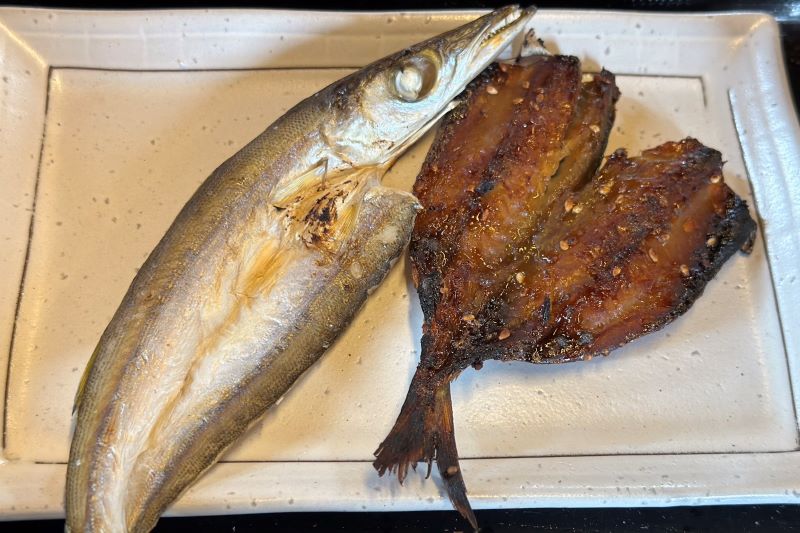
While we were enjoying our meal, she told us many stories related to ama divers, such as how they go diving, how to become a diver, the current shortage of ama divers, and environmental issues.
Specifically, she told us about the common stories of ama divers, such as the one about how they use toothpaste to keep their goggles from fogging up, how global warming has reduced the abalone catch because less seaweed grows to feed the abalone, and how the number of days ama divers can go out fishing is much fewer than in the past because the sea is rough on many days. It was all very interesting and educational and meaningful.
In addition to enjoying fresh seafood, you will also have the rare opportunity to learn about ama culture directly from ama divers in action. However, depending on the direction of the wind, smoke and soot may be blown around, so I recommend that you wear clothes that you don’t mind getting dirty.
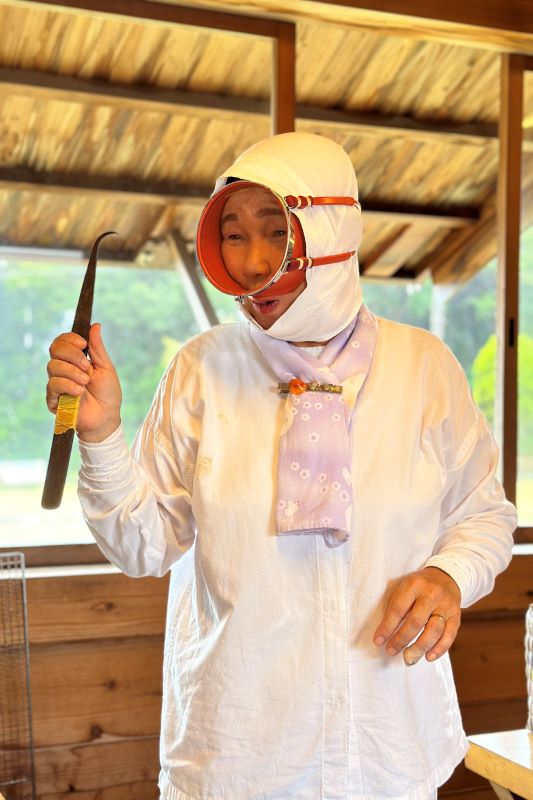
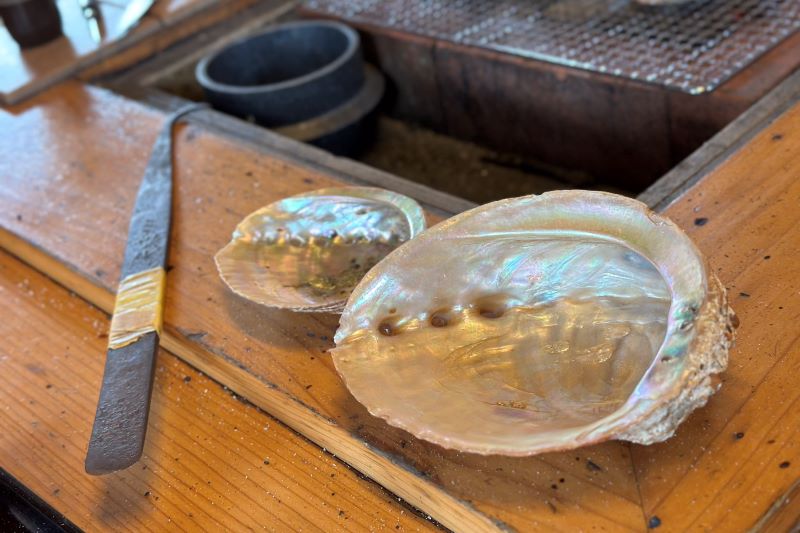
Ama Hut Satoumian
| Address | 2279 Koshika, Shima-cho, Shima-City, MIE |
| TEL | +81-599-85-1212 |
| Open Hours | 11:00 – 20:30 (last order starts at 19:00) Telephone inquiries: 9:00-17:00 * Advanced reservation is required (until 2 days before). |
| Close | Year End / New Year There are Irregular holidays too. |
| Website | https://satoumian.com/en |

